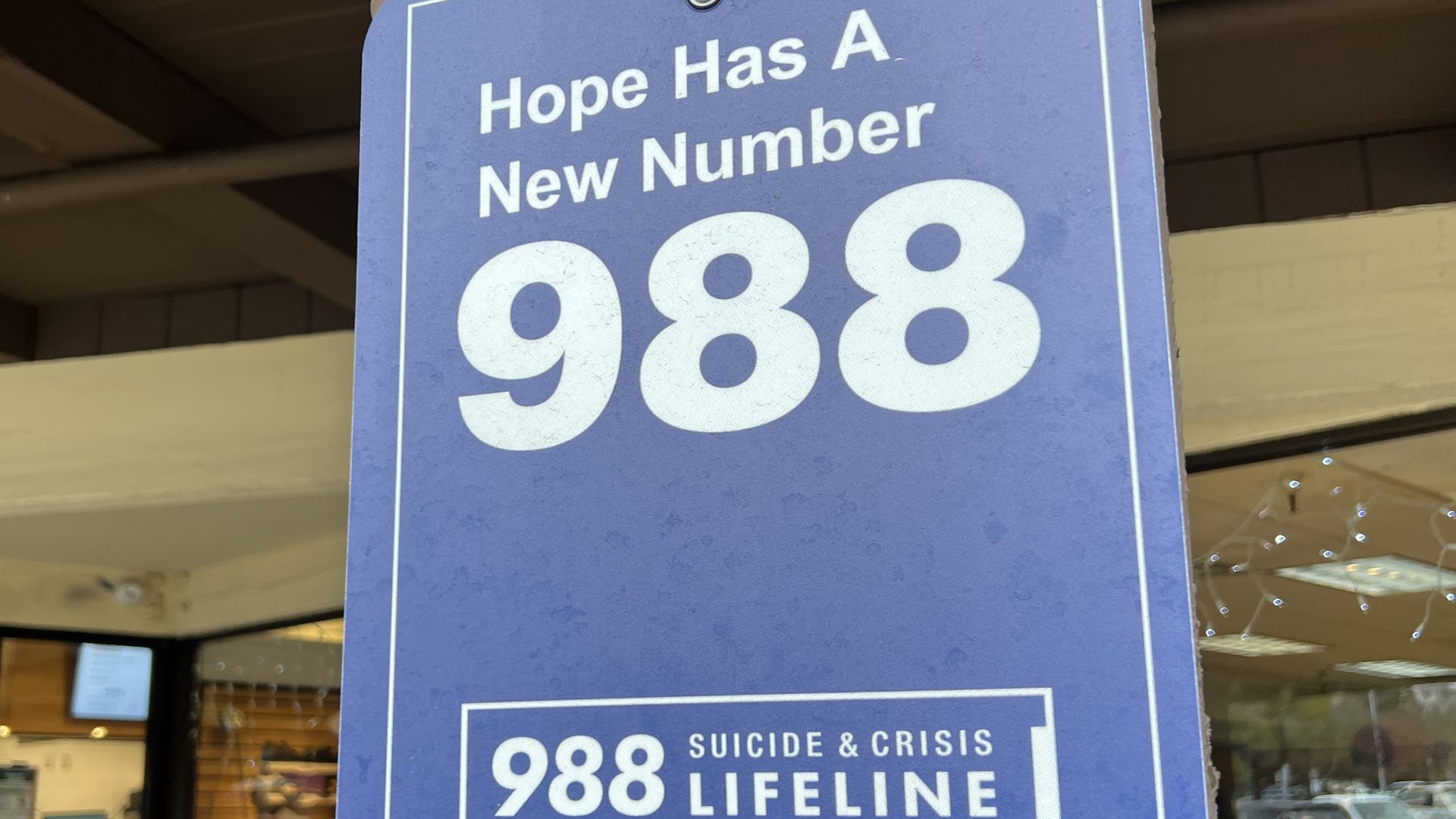For years, LGBTQ youth in need of mental health support have been able to call and text the 988 Suicide and Crisis Lifeline in search of help. Parts of this practice will change this week.
Specialized suicide prevention services, provided by counselors trained to work with groups at high risk for suicide, such as LGBTQ youth, end on Thursday, July 17. The lifeline will “no longer silo LGB+ youth services,” according to a June 2025 statement from the federal Substance Abuse and Mental Health Services Administration (SAMHSA). Instead, the statement said, the lifeline will “focus on serving all help seekers.”
Who receives help from the 988 Lifeline?
Unbiased. Straight Facts.TM
People have called the 988 Lifeline, a crisis help line, more than 16 million times since 2022. 1.3 million people have used the crisis line’s LGBTQ-specific services.
Helping everyone is a core mission of SAMHSA, a subsidiary of the Department of Health and Human Services that focuses on “public health efforts to advance the behavioral health of the nation,” according to the administration’s website.
“Everyone who contacts the 988 Lifeline will continue to receive access to skilled, caring, culturally competent crisis counselors who can help with suicidal, substance misuse, or mental health crises, or any other kind of emotional distress,” SAMHSA wrote in its June statement. “Anyone who calls the Lifeline will continue to receive compassion and help.”
But removing targeted care for LGBTQ youth has alarmed researchers who worry the government is straying from a standard practice of providing essential services for its constituents.
Specialized care is important for communities with specific needs, said Perry N. Halkitis, dean of the Rutgers School of Public Health.
“Just like a woman needs to go to an OB-GYN for specific health services, we have specific needs,” Halkitis, who is a gay man, said. “We don’t need generic health services.”
The 988 Lifeline has served more than 16 million contacts since 2022, which includes 1.3 million individuals who utilized the LGBTQ-specific services. In 2024, the organization directly served more than 231,000 crisis contacts and trained and supported nearly 250 crisis counselors and operational support staff to support the 988 Lifeline.
Suicide is the second-leading cause of death among young people ages 10 to 14 and the third-leading cause of death among 15- to 24-year-olds. LGBTQ young people are more than four times more likely to attempt suicide than their peers, according to The Trevor Project. It estimates that more than 1.8 million LGBTQ young people in the United States seriously consider suicide each year, and at least one young LGBTQ person attempts suicide every 45 seconds.
How will changes in 988 funding affect kids?
The United States is in a “mental health crisis,” according to the Centers for Disease Control and Prevention. That crisis has been exacerbated by the COVID-19 pandemic, during which youth suicide rates increased, according to the National Institute of Mental Heatlh. To combat this, the CDC has prioritized health equity by promoting policies and focusing resources on improving the lives of populations disproportionately impacted by the mental health crisis.
Halkitis said the federal government’s decision to remove focused LGBTQ services will shift the onus onto philanthropies, grassroot organizations and state governments. While Democratic states may prioritize paying for those services, he said, it would be unlikely for Republican controlled states to do so.
“I expect sharp rises in suicide and suicide attempts in those very regressive states, ” Halkitis told SAN.
A research paper published in January 2025 about the cultural competence in care for LGBTQ patients said there are better outcomes when providers “learn the terms, understand healthcare risks, and maintain a wealth of knowledge.”
“LGBTQ individuals have been observed to have a higher risk of suicidal behavior owing to perceived stigma and psychopathology,” researchers wrote. “However, community connectedness and other protective factors may reduce risk.”
Mental Health America, a non-profit advocacy group, said the federal government is a “major funding source” that sets and enforces the minimum standards of care that the states can then expand upon. The government’s role in mental health includes “regulating systems and providers, protecting the rights of consumers, providing funding for services, and supporting research and innovation.”
The National Suicide Prevention Lifeline was created in 2005. In 2020, President Donald Trump signed legislation, which received bi-partisan support, distinguishing 988 as the official lifeline number. Part of that legislation required specially trained staff and organization to be available to talk with LGBTQ youth and young adults who called the line and selected option three from the call menu.
